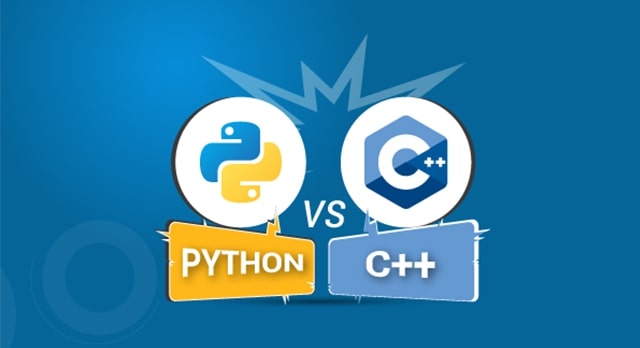C++ and Python, two of the most popular and widely used programming languages, are not only adaptable and object-oriented but can also be used to produce a diverse range of applications and functional code.
As a result, the debate over Python vs. C++ is a fascinating one, since the two programming languages have very different syntaxes, use cases, and general approaches to programming.
As a result, many struggle to choose between the two programming languages for their software development requirements.

What exactly is C++?
C++ is a widely used general-purpose programming language. You may use the language to encapsulate both high-level and low-level language elements.
As a consequence, it has been designated as an intermediate language. It is also utilized to create complicated systems when hardware-level coding is required.
What exactly is Python?
Python is a high-level abstraction object-oriented programming language. It features built-in data structures as well as dynamic binding and typing, making it an excellent alternative for quick application development.
Python also supports modules and packages, allowing for system modularity and code reuse.
Because it takes so few lines of code, it is one of the quickest programming languages. Its focus on readability and simplicity makes it an excellent option for novices.
C++ Language Characteristics
- C++ is a portable language, which implies that the same code may be used in multiple settings.
- C++ is a quick and efficient programming language.
- Dynamic memory allocation is possible in C++.
- As an object-oriented language, C++ differs from C in that it supports ideas like inheritance, polymorphism, and abstraction.
Python Language Characteristics
- Python is a platform-independent programming language. It is an open-source language that allows you to execute the same code on several platforms.
- Python is also an object-oriented programming language with features such as dynamic type checking and good readability.
- Python enables automated garbage collection as well as interactive debugging and testing options.
- Python has a vast standard library, so you won’t have to create code for every single job. Python is right for your product development? Hire qualified developers here.
What are the key distinctions between Python and C++?
Let us now evaluate the two languages based on different market metrics, grammar, and general programming norms.
- When people compare Python with C++, the first thing that comes to mind is speed. C++ offers a modest performance advantage over Python since it is pre-compiled, while Python runs code through an interpreter line by line.
- In C++, you should allocate memory to new variables and release it after completing a task. Failure to do so might lead to a memory leak. Because C++ lacks garbage collection and relies on pointers, memory leaks will emerge at some time. Python, on the other hand, provides automated memory management, so you don’t have to deal with the memory you use directly.
- Unlike C++, which is statically typed, Python is dynamically typed, which means you don’t have to specify the types of objects, making it more flexible. Furthermore, Python provides a great deal of flexibility—its variables may be utilized in any scenario.
- Semicolons are used in C++ to mark the end of a statement, but Python regards the end of the line as the end of the statement if there is no semicolon. Nonetheless, the backslash symbol may be used to make the statement continue on numerous lines.
- The words “Python dictionary” and “C++ map” relate to the languages’ vocabulary. In C++, a map is a container that contains values that are indexed by a key. While a dictionary serves a similar function in Python, it is more versatile since the keys and values do not have to be of the same type.
- C++ has multiple syntaxes but no indentation constraints, which makes the code look confusing. Python’s syntax is close to that of ordinary English, making it easy to understand and write. As a result, its indentation aids a coder in keeping track of each open bracket.
- Python and C++ have quite distinct Boolean expressions. Based on numerical values, C++ marks are true or false. Everything marked 0 is false, whereas everything else is true. None and false constants in Python are equivalent to empty sequences or collections.
Conclusion
C++ and Python are two distinct languages with widely disparate features and applications. While Python has a simple syntax and great readability, it lags much behind C++ in system programming, performance, and speed.
While Python is the greatest option for machine learning development, C++ is the best choice for a wide variety of applications, including system programming, since C++ provides us with every functionality under the sun.
Also Read
